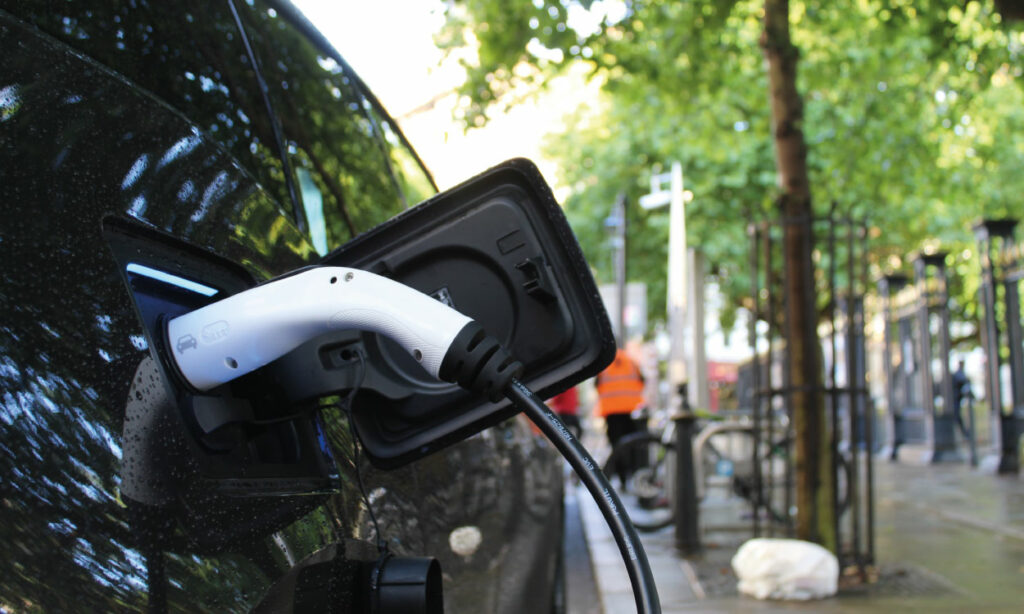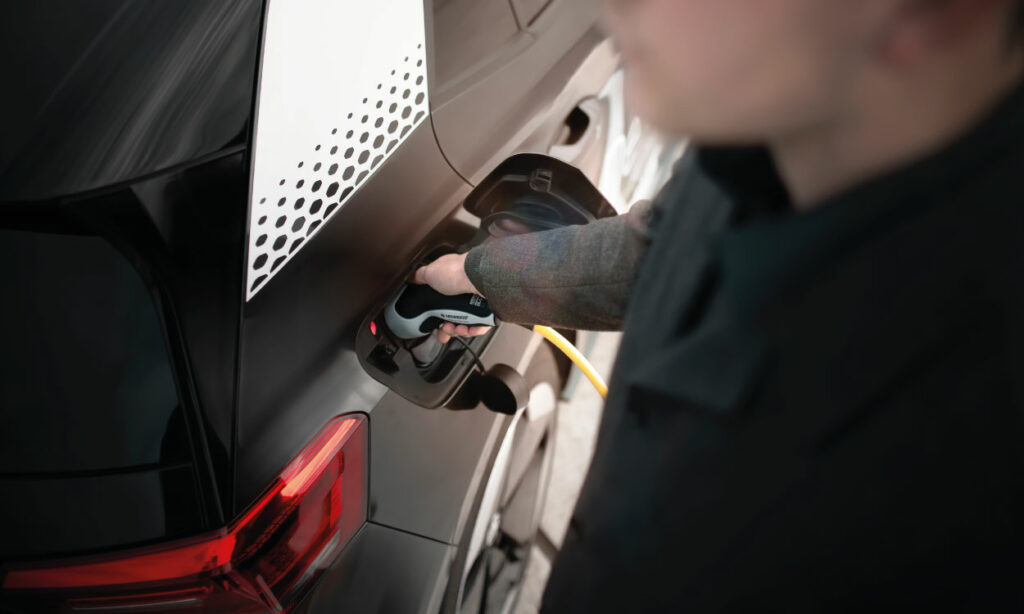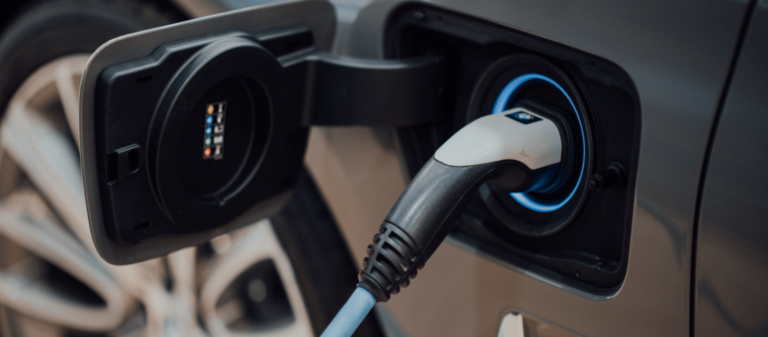Charging an electric car doesn’t need to be complicated. This guide explains everything you need to know about charging EVs at home, at work and in public.
With more and more drivers making the switch to electric cars, there’s one question that’s popping up time and time again, how do you charge an electric car?
Charging an EV is actually much simpler than you might think and in this guide, we talk you through everything you need to know about charging electric cars at home, at work and in public.

Where to Charge Electric Cars
Filling up an electric car with electricity is a little different to filling up a car with petrol or diesel. Whereas with petrol and diesel cars you’ll need to head to a petrol station to boost your juice, with EVs you can charge from almost anywhere.
A good rule of thumb when thinking about where to charge your electric vehicle is to think about where you park your car most regularly. For most people that will probably be at home, followed by at work.
It’s therefore a good idea to install charging points in these areas. You can also charge your electric car at various public EV charging points too.
Charging an Electric Car at Home
There are various ways that you can charge your electric car at home and providing you have access to off-street parking (e.g. a driveway or garage) then you can install a dedicated charging point at home.
This is usually the most convenient way to charge your EV as you can plug the car in overnight letting your car charge up whilst you sleep.
Whilst there is an initial upfront cost for installing a charging point at home, the government and many local councils are offering incentives for purchasing one such as discounts or grants. As we become more eco-conscious they’re also a great way of adding value to your home.
Charging your EV at home is a speedy solution and you’ll usually reach 25-30 miles of range per hour your car is plugged in, depending on the make and model.
Most home charging points have a cable already attached meaning you just plug your car straight in to start charging.
You can also charge your electric car using a standard three-pin socket however this takes considerably longer than using a dedicated charging point.
Charging an Electric Car at Work
If you drive to work then the chances are your car is parked up for long periods of time. Long periods of time that are perfect for charging.
Many major employers are starting to install EV charging points at the workplace as an additional perk for workers who drive electric cars and to push their sustainability credentials.
Depending on the set-up your employer opts for you could even charge your car for free or at a subsidised rate, so it’s definitely worth raising the possibility of installing a charger if your company hasn’t already.
If there are multiple EV drivers within your company then join forces to help convince your bosses that installing a charging point is a good idea.
Many streets and car parks also now have EV charging stations (more on those later) so if you park your car in a public space for work then try to find an area that allows you to charge your car whilst you park.
Workplace charging points work either like a home charging station, by simply plugging in your car, or by using a card or smartphone app to begin charging.
Charging an Electric Car in Public
Public charging stations are much more common than you might think. Nowadays you can find EV charging points everywhere from petrol stations and multi-storey car parks, to supermarkets, gyms and retail parks.
If a street offers public parking then you might even find one installed there too.
The great thing about public charging points is that they allow you to top up your EV’s battery whilst you’re out and about and thanks to their increase in popularity, you’re never normally very far away from one.
You don’t always need to charge your car all the way up to full or wait until it gets to empty either which means you don’t need to worry about taking up a public charging point for too long. Instead, these are the perfect choice if you just want to boost your battery to get you to your destination.
Public charging points usually work by plugging in your car with the provided wires and logging in to the system with either a card or app. Not all public charging points work like this, however.
Some require you to provide your own cables (we recommend keeping them in your boot at all times) and more public charging points are popping up that don’t require you to log in at all.
To help you find your nearest public charging station we recommend downloading the Evaa app which allows you to find and pre-book your nearest Evaa charging point.
It’s always a good idea to practise using different types of charging stations when they aren’t busy to help make the process of charging your EV in public as stress-free as possible.

Charging an Electric Car on Long Distance Journeys or in Emergencies
Often the biggest concern for EV drivers or those thinking about making the switch is undertaking long-distance journeys in an Electric Vehicle.
The idea that EVs don’t have a practical range is quickly becoming a long-forgotten myth thanks to EV development by major car manufacturers.
No matter how good electric cars get, however, they are still going to need to be topped up at some point on a long-distance journey and just like petrol alternatives, drivers may find themselves getting to empty a little quicker than they expected.
If you realise that your battery isn’t going to get you to your end destination then you can make use of the extensive range of rapid EV charging points available at motorway service stations and petrol stations.
Rapid chargers do exactly what they say, charge your car quickly helping to get you back on the road as fast as possible.
With rapid chargers you don’t need to get your battery to 100%. Instead, experts suggest stopping once you’ve hit 80%, giving you plenty of battery to continue your journey.
How Long Does it Take to Charge an EV?
So now you know where you can charge your EV, you might be wondering how long each option takes?
The exact time it will take to charge your electric vehicle will depend on the make and model of the car and the size of its battery; however, most EV batteries work in a similar way and take a similar amount of time to reach full power.
Home Charging
Home charging points will typically add around 25-30 miles of range for every hour the car is charging. Depending on the size of your battery and how low on charge it is when you start, you can expect to be plugged in for anywhere between 1-8 hours before you’re fully charged.
Public / Workplace Charging
Public chargers found in supermarkets, car parks or at the workplace usually work in a similar way to home chargers. Like home charging points the charging time for these is around 25-30 miles per hour of charging.
If you need to use a public charging point for a long period of time then it’s a good idea to combine the activity with something else e.g. going to work or to the cinema. Once you’re done you’ll return to a fully charged car.
Rapid Charging
Rapid charging points are usually found at service stations and petrol stations and are designed for drivers who need to get back on the road quickly. These charging points will usually boost your battery back to 80% within 25-50 minutes.

Types of EV Chargers
Type 1 EV Chargers
Type 1 EV chargers have a 5-pin design and provide fast charging at an output between 3.7kW and 7.4kW AC. Type 1 charging cables usually provide between 12.5-25 miles of range per hour of charging.
They also feature a latch to keep the plug in place whilst the car is charging, however, whilst this stops the wire from falling out accidentally and halting the charging, anyone can remove these wires from your car mid-charge.
Type 2 EV Chargers
Type 2 EV chargers are now the standard EV charging plug type in Europe and have a 7-pin design. Type 2 charging cables provide between 30-90 miles of range for each hour the car is on charge.
They also have a locking pin that secures the plug in place throughout the charging process. Only the owner of the car is able to remove Type 2 charging cables, making them a more secure option for public charging stations.
CCS EV Chargers
A Combined Charging System (CCS) is a type of connector that’s used for rapid charging.
It is used worldwide and combines some of the connections of the Type 2 charging interface, adding two additional DC (Direct Current) power lines that allow the charger to run at higher voltages.
CHAdeMO EV Chargers
CHAdeMO chargers are another rapid EV charging solution. The name stands for Charge de Move.
CHAdeMO chargers supply between 6Kw to 150Kw of electricity to a car’s battery and these chargers use their own dedicated connector to charge electric vehicles. You’ll need to check ahead at public charging points to ensure they have CHAdeMO connectors available.

Smart Charging Tactics
Most electric car drivers will want to know how they can charge their car in the quickest amount of time for the least amount of money. Luckily there are a few smart charging tactics you can apply to help make EV charging quicker, cheaper and easier.
- Set up a dual electricity tariff for your home’s electricity supply. Charging your car during the off-peak hours will help to keep your electricity bill down.
- Installing a home charging point can reduce your fuel expenses by around 80% compared to petrol and diesel cars.
- Consider installing solar or wind power at your home to help further reduce your energy rates. Greener energy solutions such as solar panels and EV charging points will also add value to your home.
- Combine public charging with other activities such as going into the office or doing your weekly supermarket shop to save you sitting in your car waiting for it to charge.
- Use an app such as the Evaa app to book ahead so you know that your charging point is available and waiting for you.
- Avoid using public charging stations at peak times if you don’t want to queue for a charging point.
Final Thoughts
As you can see, there are various ways you can charge your electric vehicle depending on your lifestyle, journey length and the make and model of your EV.
Electric vehicle charging doesn’t need to be complicated though and once you’ve got the hang of how your individual car works and you’ve experienced both at home and public charging points, you’ll be able to work out which EV charging solution works best for you.
Don’t forget you can contact the Evaa team to find out more about our network of EV charging points and how our team are helping to revolutionise EV charging across the country.


